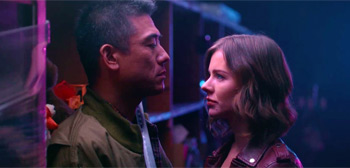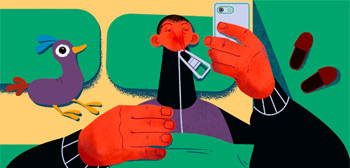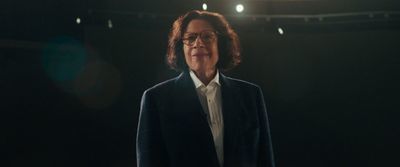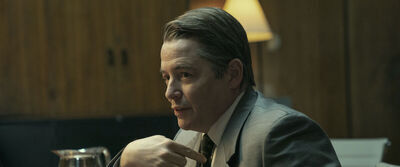The Zone of Interest
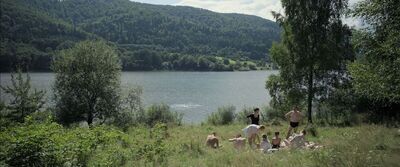
Though it’s been seven months, I remain haunted by “The Zone of Interest.” When I first watched writer-director Jonathan Glazer’s radical take on the Holocaust back in May, I couldn’t quite pinpoint what was so startling about it. There have been many films on this horrific chapter in history—from “Night and Fog” to “Schindler's List” to “The Pianist,” and as recently as “Occupied City”—all asking the viewer to bear witness to unfathomable suffering under a genocidal regime’s brutality. It would be a mistake, however, to interpret Glazer’s adaptation of Martin Amis’ same-titled novel as him asking viewers to simply witness. It’s a disturbing work, guided by a discomforting sense of immaculateness that chills the viewer. It is the sanitation the film performs, which speaks to the now, in a way few Holocaust films have done before.
You could, of course, accuse Glazer’s film of merely being a formal exercise. He challenges himself to not only work purely through atmosphere, but also takes the risk of telling this story from a German perspective. Rudolf Höss (Christian Friedel) is the commandant of the Auschwitz concentration camp. When he first appears on-screen, he is with his wife Hedwig (Sandra Hüller) and their children, relaxing at the riverside, in a verdant field surrounded by lush mountains. Soon we are introduced to their dream house, a tall concrete structure surrounded by a lavish yard and seemingly even taller walls. On the other side of these barriers is the camp itself. Outside of a single shot—a low angle of Rudolf, framed by black smoking billowing in the background—we never really see inside the camp. Instead, viewers are asked to aurally visualize. Much has been explained by Glazer about the two movies occurring within “The Zone of Interest” (the one perceived through sight and the other through sound). That tension is obvious, yet no less powerful.
Much has also been made of the banality of evil. The Höss family live next door to ongoing genocide yet never comment on the horrific screams or the smell of death nearby. Thus, there is an expected coldness which seeps into the film’s lack of sentimentality. They raise their children under a pretense of normalcy—Rudolf tells them late-night bedtime stories, takes them horseback riding, and participates in other pastoral pursuits. Because of the emotional blankness, a burden falls on Friedel and Hüller to chart a tricky course: How human can you make someone who is clearly inhuman? Friedel gives nothing away, relying on a cold stoicism that translates to his frigid posture. Hüller is a tad slipperier, a vicious rattlesnake with a blade for a tail. If not for their performances, you could see how Glazer’s framing could easily go left.
But that feeling isn’t anything new for Glazer: “Birth” was widely criticized for its ending and the on-screen relationship between Nicole Kidman and Cameron Bright. “Under the Skin,” though better received critically, walks a fine feminist line. Those films, along with his debut “Sexy Beast,” witnessed Glazer pushing his audio-visual storytelling toward leaner, angular compositions and a dynamic sense of sound capable of unnerving the viewer. In “The Zone of Interest,” with cinematographer Lukasz Zal, he furthers those two desires, often linking domestic spaces causally to exterior sound: When a train rumbles by, bringing more Jewish people, a package comes to the house with stockings presumably taken from the murdered occupants of the previous train. On Rudolf’s side of the wall, the family celebrates life (birthdays and social gatherings) while death occurs on the other side.
- How to build a website with WordPress and what are the best plugins to use Building a website with WordPress is an excellent choice due to its versatility, ease of use, and a vast array of plugins that enhance functionality. Here’s a comprehensive guide to building a WordPress website, along with recommendations for the best plugins
- Top WordPress Plugins for Managing Ads and Monetizing Your Website Effectively: Why is Ads Management Important for Website Monetization? Strategic ad placement throughout the website enables publishers to maximize ad revenue while ensuring a positive user experience. The positioning of ads is critical in capturing users’ attention without being intrusive or disruptive. By understanding user behavior and preferences, publishers can make informed decisions regarding ad placement to ensure that the ads are relevant and engaging.
- Top Directory Plugins for WordPress to Create Professional Listings and Directories: If you are interested in establishing professional listings and directories on your WordPress website, the following information will be of value to you. This article will present the top directory plugins available for WordPress, which include GeoDirectory, Business Directory Plugin, Sabai Directory, Connections Business Directory, and Advanced Classifieds & Directory Pro.
- The Most Important Stages and Plugins for WordPress Website Development: Developing a WordPress website requires careful planning, execution, and optimisation to ensure it is functional, user-friendly, and effective. The process can be broken into key stages, and each stage benefits from specific plugins to enhance functionality and performance. Here’s a detailed guide to the most important stages of WordPress website development and the essential plugins for each stage.
- .org vs .com: A Top Guide to the Differences in Domain Extension
When you set up a website for a business or a non-profit organisation, you might think the most important part of the address is the actual name. But the domain extension (the bit that comes after the dot) is just as important for telling people what your site is all about. - The Best WordPress Plugins for Image Optimization to Improve Load Times and SEO. The pivotal element lies in image optimization. This discourse delves into the significance of image optimization for websites and its impact on load times. Furthermore, we will delve into the advantages of leveraging WordPress plugins for image optimization, such as streamlined optimization processes, enhanced SEO, expedited load times, and an enriched user experience.
- What is a data center or Internet data center? The term “data center” has become very common due to the role it plays in many of our daily activities. Most of the data we receive and send through our mobile phones, tablets and computers ends up stored in these data centers — which many people refer to as “the Cloud”, in a more generic way.
The close correlation speaks to the repulsively intimate relationship Rudolf and his family have with destruction. They profit off an entire people’s death in unspeakable ways: In one scene, one of Rudolf’s sons has a flashlight in bed. But he’s not rifling at a comic book in the dark; he’s rummaging through his collection of gold teeth. In another scene, Hedwig receives a fur coat. She tries on the fine pelt, twisting her body to catch her every angle in the mirror. In one of the pockets, she discovers the previous owner’s lipstick; in the next scene she tries the lipstick on. Their easeful proximity to murder is thrown in stark relief when Hedwig’s mother arrives. At first, her mother is impressed by their “scenic” home. “You really have landed on your feet, my child,” she says to a proud Hedwig. But when the emanating sounds and smells become apparent to Hedwig’s mother, she reacts in a way that shocks Hedwig.
In a film predicated on dissonance, the Höss’ persistent tidying up looms large. Whenever Rudolf takes off his boots, there is a Jewish prisoner there to clean them. When soot from the camp touches the river, Rudolf’s kids are scrubbed down with scalding hot water. When Rudolf has affairs, he washes his privates in a slop sink before returning to his wife’s bedroom. Weeds are pulled and human ashes are used to replenish. Every misdeed by the Höss family functions on this cycle of obfuscation. Composer Mica Levi’s foreboding score, which can be guttural and dirty in infrared scenes, wherein a girl picks up food from the mud, participates in the dichotomy of polishing and revealing. The use of the color white—new sheets, sleek suits, and sterile office walls—depends upon this blurring. Even the language, the way everyone speaks about death in mechanical terms and technicalities, works to wash over the truth. If you’re always talking in circles about your crimes, isn’t it easier to continue performing them in a straight line?
As much as Glazer’s film is about a specific moment in time, it’s equally concerned with how history records tragedy. Consider when Rudolf is transferred from Auschwitz to Oranienburg; Hedwig wants to stay in the dream house, in the reality she’s crafted for herself. Rudolf on the other hand, for the first time, openly speaks on the phone to his wife about murder without softening the language. Her reaction is grim; his words barely register. “It’s in the middle of the night and I need to be in bed,” she disturbingly replies. He hangs up on her, leaves the office and descends the stairs. While walking down the steps, he vomits several times until he comes to a barely lit hallway. Editor Paul Watts makes a narrative-breaking cut to present-day Auschwitz. It’s being cleaned—swept, mopped, and vacuumed—for visitors to witness the artifacts (shoes and luggage) now without owners.
This juxtaposition allows for the two results of sanitization to be at play. For much of the film, viewers see how sanitization can be used to erase. Here, Glazer gives us a glimpse of how it can also be used to maintain. Because how we remember history, how we make note of current events—through propaganda, photography, video, and the internet—is a constant interplay between the truth as it exists and as it has been edited. The fact that “The Zone of Interest” arrives now, as world powers manipulate the narrative to sanitize their crimes, makes Glazer’s images all the more chilling. Glazer’s intermingling of the now and the then, appearance versus truth, life and annihilation are rendered into unignorable magnitude.

